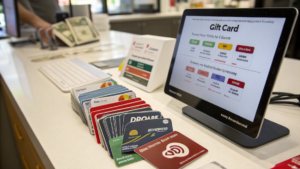How Are Kraft Bags Commonly Used in Various Industries?
Are you curious about the many uses of kraft bags beyond just carrying things? They are surprisingly versatile.
Kraft bags are commonly used across various industries, including retail, food & beverage, and corporate events, serving as versatile tools for packaging, branding, and promoting sustainability. Their natural aesthetic, durability, and customizability make them ideal for conveying a brand's ethos and enhancing the customer experience.
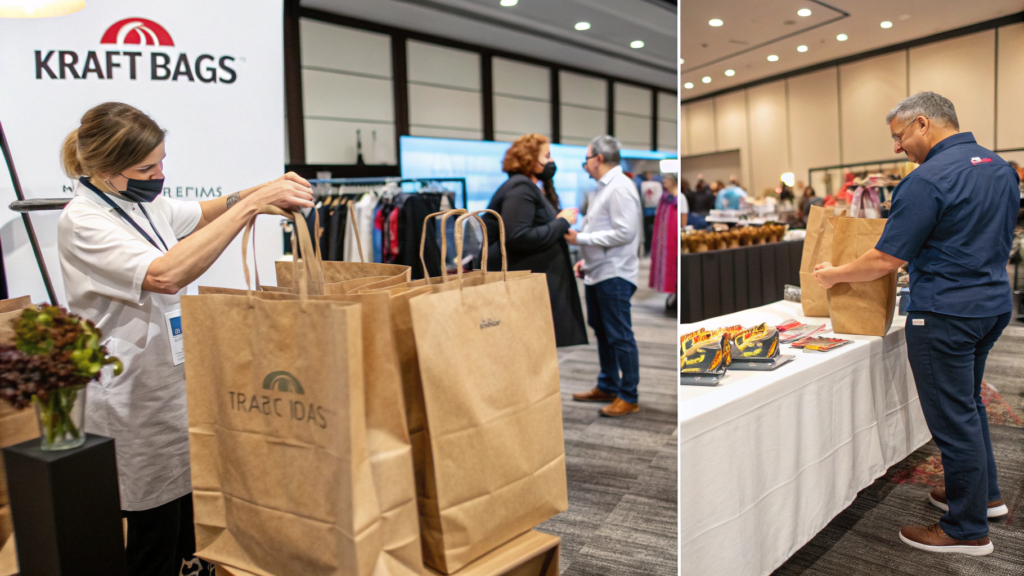
Kraft bags are no longer just containers. They have evolved into communicators of brand ethos, sustainability, and customer experience. Their main job is still practical—carrying goods. But their look, feel, and how they can be recycled have made them a smart choice in many industries. Each industry uses them to express something more than just convenience.
What are the Advantages of Kraft Paper Packaging?
Have you ever wondered why so many businesses choose kraft paper for packaging? It offers a lot of benefits.
The advantages of kraft paper packaging include its high durability and tear resistance, eco-friendliness1 due to being recyclable and often biodegradable, versatility in customization for branding, and a natural, earthy aesthetic that aligns with sustainable brand values. It is also cost-effective2 for many applications.
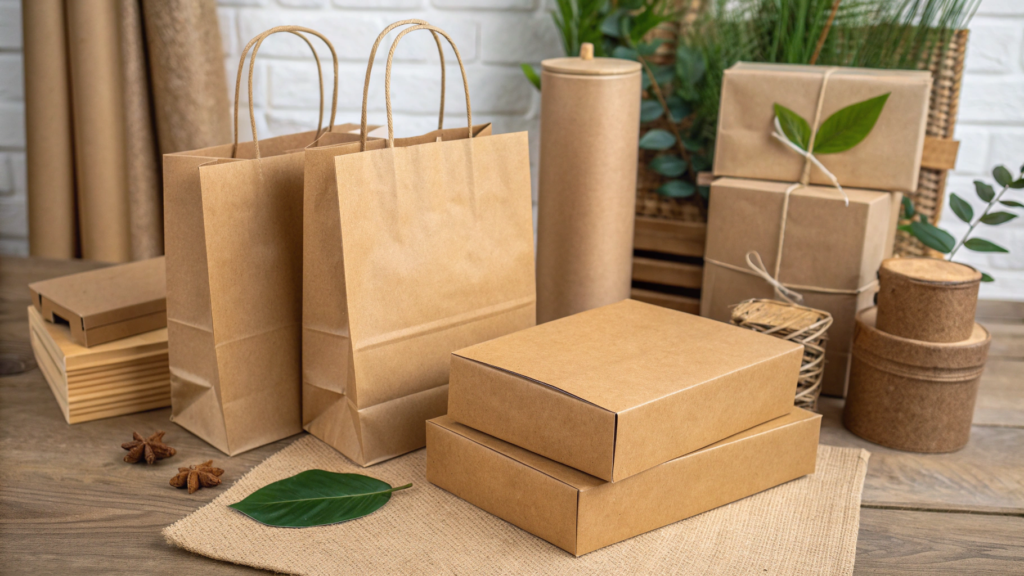
I have seen firsthand how much value businesses place on thoughtful packaging. In the retail world, especially in fashion, lifestyle, and boutique food, kraft bags are seen as extensions of brand personality. Whether it is a high-end store with a minimalist black-stamped logo or a handmade soap brand using twine, the bag itself becomes part of the unboxing moment. Consumers now link kraft paper not just with eco-friendliness but with intention. It sends a quiet message: "We care about the environment—and about details."
Key Benefits of Choosing Kraft Paper Packaging
Kraft paper offers a compelling set of advantages that make it a preferred choice for a wide array of packaging needs across different sectors.
| Advantage | Description | Impact on Business/Consumer | Why It's a Smart Choice |
|---|---|---|---|
| Durability & Strength | Strong fibers make it highly resistant to tearing and punctures. | Protects products during transit and handling, reduces damage. | Ensures product integrity, enhances customer satisfaction. |
| Eco-Friendliness | Made from renewable resources, recyclable, biodegradable, often compostable. | Appeals to eco-conscious consumers, improves brand image. | Supports sustainability goals, reduces environmental footprint. |
| Customization | Excellent surface for printing logos, designs, and branding messages. | Allows for strong brand identity and unique packaging. | Enhances brand recognition, creates memorable experience. |
| Versatility | Available in various weights, colors, and forms (bags, boxes, wraps). | Adaptable to diverse product types and industry needs. | Broad applicability across retail, food, and e-commerce. |
| Cost-Effectiveness | Generally more affordable than many synthetic packaging options. | Reduces operational costs for businesses. | Provides a budget-friendly, high-value solution. |
| Natural Aesthetic | Earthy, rustic look that conveys authenticity. | Aligns with organic, handmade, and natural product branding. | Appeals to consumers valuing transparency and simplicity. |
| Breathability | Allows some air circulation, good for fresh produce. | Prevents moisture buildup, extends shelf life for certain goods. | Ideal for bakeries, fresh food, or items needing air. |
In cafés, bakeries, and quick-service restaurants, kraft bags serve two purposes. They are food-safe and they align with the brand. Their grease resistance3 and breathability make them good for take-out. In a market where diners are eco-aware, kraft packaging signals health and low environmental impact. These are traits food businesses want for their products.
What are the Pros and Cons of Kraft Paper?
Are you weighing the decision of using kraft paper? Like any material, it has both benefits and drawbacks.
The pros of kraft paper include its strength, eco-friendliness, and aesthetic appeal, making it a popular choice for sustainable branding. However, its cons can involve less water resistance compared to plastic, potential for creasing, and limited barrier properties against certain elements unless specially treated.
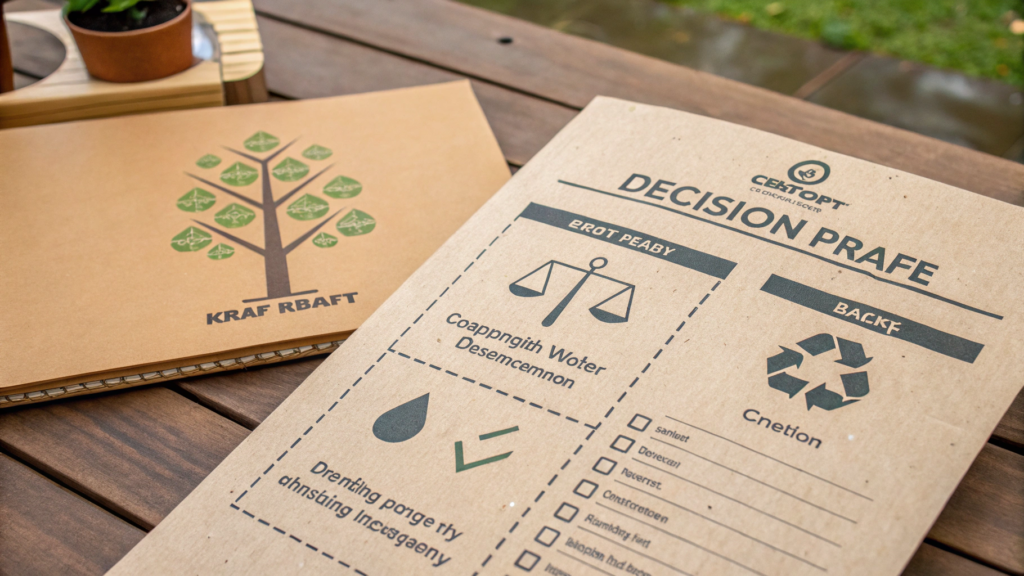
I always advise my clients, like Jacky, to look at the whole picture. For corporate gifting or events, kraft bags are a versatile and printable solution. They help companies distribute items without relying on plastic. Their sturdy handles and spacious structure are good for carrying brochures or merchandise. Because people often reuse these bags, the company's logo keeps traveling. This offers more visibility without ongoing cost.
Balanced View: Weighing Kraft Paper's Attributes
Understanding both the strengths and weaknesses of kraft paper helps businesses make informed decisions about its suitability for their specific packaging or branding needs.
| Aspect | Pros | Cons | Best Suited For |
|---|---|---|---|
| Environmental Impact | Highly sustainable, recyclable, biodegradable. | Not always made from 100% recycled content; bleaching can be used. | Eco-conscious brands, sustainable packaging initiatives. |
| Strength & Durability | Strong, tear-resistant due to virgin fibers. | Can be less rigid than corrugated cardboard; creases easily. | Heavy-duty bags, protective wrapping for certain items. |
| Aesthetics | Natural, rustic, versatile for printing. | Can appear less "luxurious" than glossy finishes for some. | Organic products, handmade goods, minimalist branding. |
| Water Resistance | Moderate resistance to moisture, but not waterproof. | Can absorb liquids if exposed, potentially damaging contents. | Dry goods, items with primary packaging for moisture protection. |
| Barrier Properties | Limited barrier against oxygen, moisture, light (unless coated). | Not ideal for sensitive food products requiring long shelf life. | Short-term food packaging, general retail, non-food items. |
| Cost | Generally cost-effective for packaging solutions. | Specialized treatments (e.g., grease-proof) can increase cost. | Budget-friendly branding and packaging solutions. |
| Printability | Excellent surface for printing and customization. | Colors can appear muted on natural brown kraft unless opaque ink is used. | Brands aiming for natural, understated, or vibrant (with opaque ink) designs. |
The insight is clear: kraft bags are not just functional. They are strategic carriers of meaning. What makes them uniquely powerful is their ability to connect sustainability and branding. They are blank canvases that can be molded to reflect a company's values, budget, and audience expectations. Every kraft bag becomes a conversation between the business and the consumer. This conversation is spoken in texture, material, and design.
Are Kraft Bags Eco-Friendly?
Are you trying to make more eco-conscious choices for your business? You might be wondering if kraft bags truly live up to their green reputation.
Yes, kraft bags are generally considered eco-friendly because they are made from renewable wood pulp, are fully recyclable, and are biodegradable, meaning they break down naturally in the environment. Many are also produced using sustainable forestry practices and can incorporate recycled content.
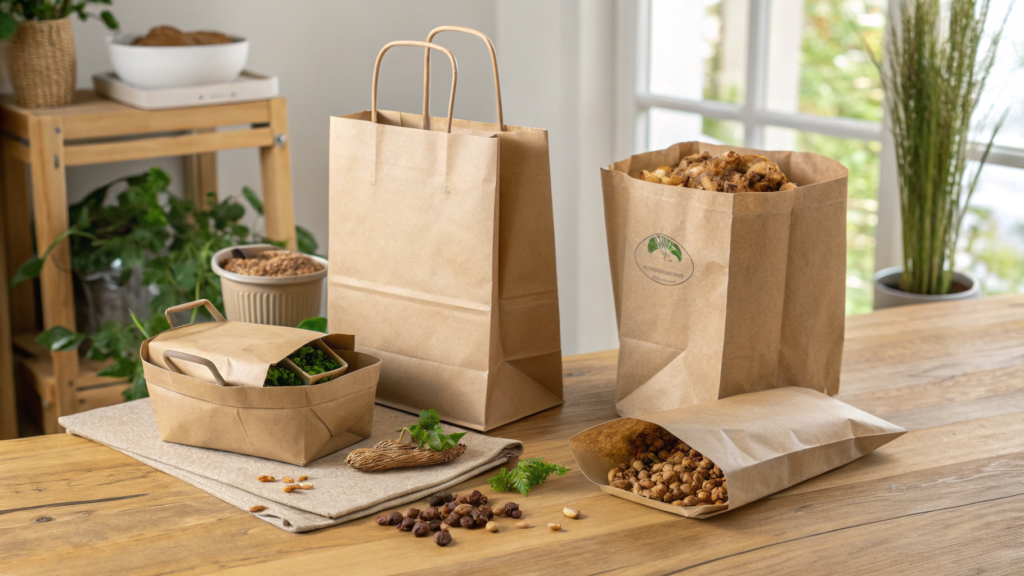
I have seen the shift in consumer expectations. People want to know their products and packaging are not harming the planet. Kraft bags are a big part of meeting that demand. They are simple in construction but rich in possibility.
The Environmental Footprint of Kraft Bags
Evaluating the eco-friendliness of kraft bags involves looking at their entire lifecycle, from raw material sourcing to end-of-life disposal, highlighting why they are often a preferred sustainable choice.
| Aspect | Eco-Friendly Contribution | Consideration for "Most" Eco-Friendly | Comparison to Plastic Bags |
|---|---|---|---|
| Raw Material | Made from wood pulp, a renewable resource (trees). | Look for FSC-certified (Forest Stewardship Council) paper. | Plastic from non-renewable fossil fuels. |
| Recyclability | Highly recyclable in common paper recycling streams. | Ensure clean and dry for effective recycling. | Plastic bags are often not accepted in curbside recycling. |
| Biodegradability | Decomposes naturally in compost or landfill without harmful residues. | Timeframe varies, but generally breaks down quickly. | Plastic bags persist for hundreds of years. |
| Compostability | Many varieties are home or industrially compostable. | Check certifications (e.g., ASTM D6400 for compostability). | Plastic bags are not compostable. |
| Reduced Pollution | Manufacturing generally produces fewer greenhouse gases than plastic. | Energy and water consumption still present; strive for efficient mills. | Higher carbon footprint for plastic production. |
| Recycled Content | Often incorporate post-consumer or pre-consumer recycled paper. | Higher recycled content means less virgin pulp used. | Plastic bags rarely use significant recycled content. |
| Reusability | Durable enough for multiple uses before disposal. | Encourages consumer to prolong bag's life. | Plastic bags tear easily, limiting reuse. |
Businesses that understand the symbolic power of kraft bags can turn a basic necessity into a memorable brand experience. Across industries, they show a shift from wasteful to mindful, from generic to expressive. This makes them a truly eco-friendly choice for forward-thinking companies.
Conclusion
Kraft bags are versatile, sustainable tools used across retail, food, and corporate sectors. Their durability, eco-friendliness, and brandable surface make them a strategic choice for businesses communicating quality and values.


